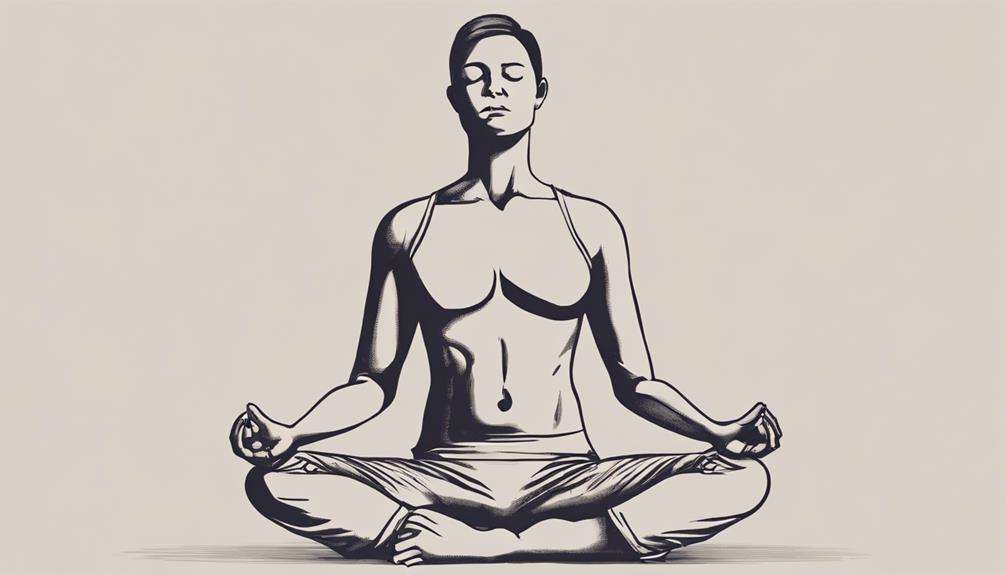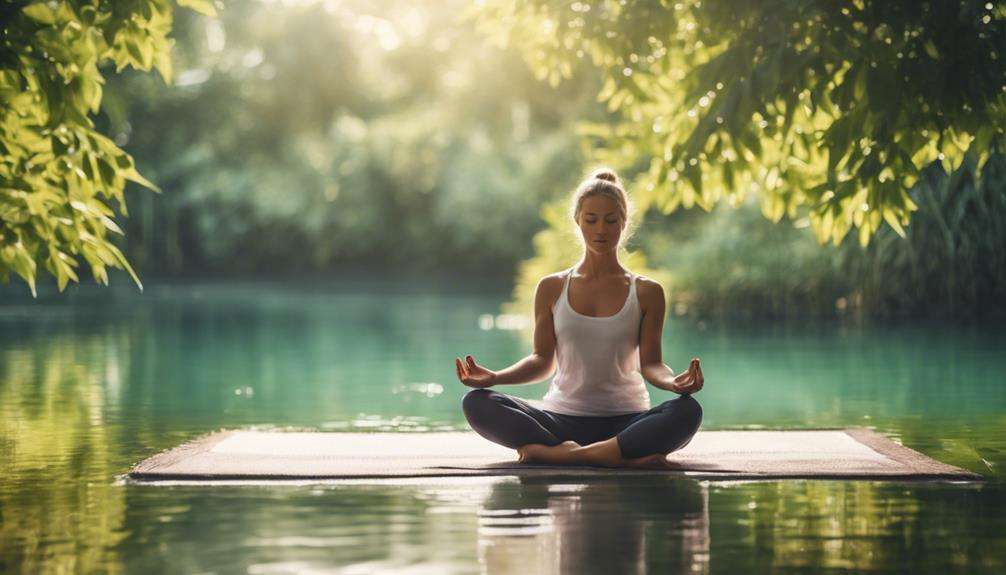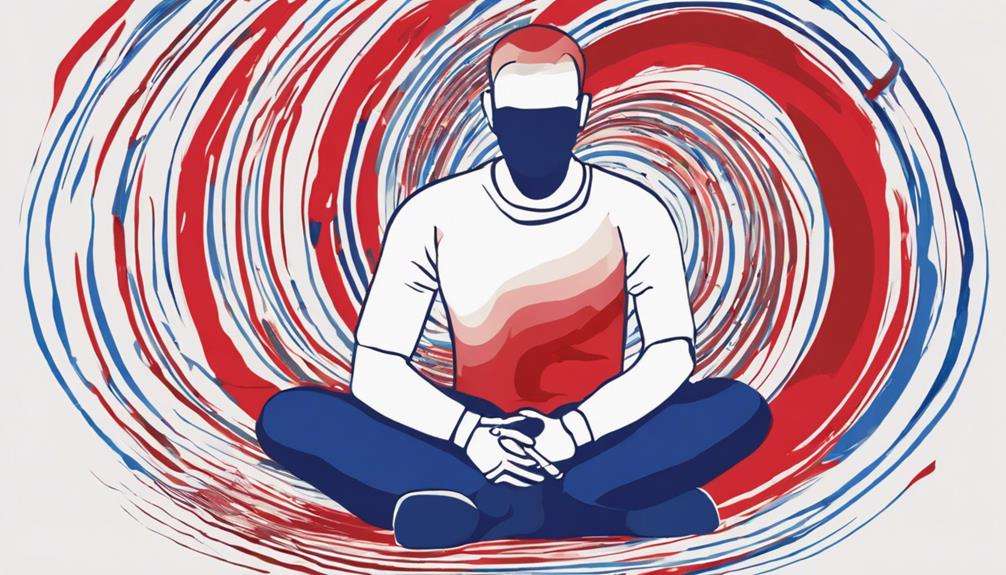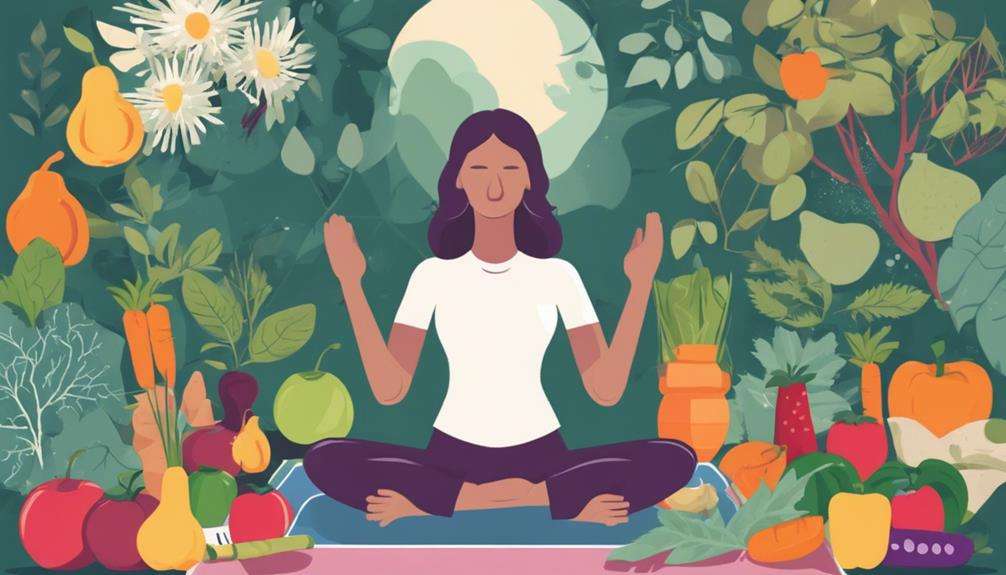Imagine your body as a finely tuned instrument, each part working harmoniously to create a symphony of health. Just like a skilled conductor, you have the power to fine-tune your wellness and blood pressure naturally.
By exploring the interconnected pathways of physical activity, nutrition, stress management, and lifestyle adjustments, you can uncover the secrets to a healthier, more balanced life.
So, are you ready to discover the key to releasing your body's full potential and achieving peak well-being?
Key Takeaways
- Meditation, deep breathing, and yoga practices aid in natural blood pressure reduction.
- Mindfulness techniques activate the parasympathetic nervous system for overall wellness.
- Gentle yoga stretches and asanas promote relaxation and stress reduction.
- Pranayama techniques improve heart health and help regulate blood pressure levels.
Benefits of Meditation for Blood Pressure
If you're looking to naturally lower your blood pressure, incorporating meditation into your daily routine can be a beneficial and effective strategy. Meditation has been shown to activate the parasympathetic nervous system, which helps in reducing blood pressure levels. Techniques like deep breathing and diaphragmatic breathing, commonly practiced in meditation, have a direct impact on lowering blood pressure. Research indicates that guided meditation sessions and deep breathing exercises can effectively regulate heart rate, contributing to the overall well-being of an individual.
By engaging in mindfulness practices such as meditation, you can positively influence not only your blood pressure but also your general state of health.
When you meditate, you're basically allowing your body to shift from the fight-or-flight mode of the sympathetic nervous system to the rest-and-digest mode of the parasympathetic nervous system. This change leads to a decrease in heart rate and blood pressure, promoting a sense of calm and relaxation. By making meditation a part of your daily routine, you can harness its power to support your cardiovascular health and enhance your overall well-being.
Yoga Poses for Lowering Blood Pressure
If you're looking to naturally lower your blood pressure, incorporating gentle yoga stretches, breathing techniques, relaxation, and meditation can be beneficial.
These practices can help reduce stress, improve circulation, and support heart health, all contributing to better blood pressure control.
Try incorporating yoga poses like Savasana, Sukhasana, Cat-Cow, Child's Pose, and Legs Up the Wall into your routine for a holistic approach to managing your blood pressure levels.
Gentle Yoga Stretches
Looking to naturally lower your blood pressure through gentle yoga stretches?
Yoga poses like Child's Pose, Cat-Cow, and Legs Up the Wall can help in relaxation, stress reduction, and improving circulation. These gentle stretches aid in releasing tension, calming the nervous system, and supporting cardiovascular health.
By incorporating these practices into your daily routine, you can enhance your overall well-being and manage high blood pressure naturally. Regularly engaging in these yoga stretches offers a holistic approach to blood pressure management, focusing on both physical and mental wellness.
Embrace the power of yoga as a gentle yet effective way to reduce stress, promote relaxation, and contribute to a healthier cardiovascular system.
Breathing Techniques
To effectively lower your blood pressure through yoga, incorporating specific breathing techniques into your practice is key. Yoga breathing techniques, also known as pranayama, play a significant role in reducing hypertension.
Deep breathing while practicing yoga poses helps stimulate the parasympathetic nervous system, leading to stress reduction and relaxation. Poses like Sukhasana (Easy Pose) or Savasana (Corpse Pose) are particularly beneficial for managing blood pressure.
Relaxation and Meditation
Incorporate relaxation and meditation into your yoga practice to effectively lower your blood pressure and promote overall well-being.
Yoga, especially poses like Savasana, Uttanasana, and Balasana, has been proven to reduce blood pressure and heart rate, making it beneficial for individuals with hypertension.
By engaging in deep breathing exercises during yoga, you can stimulate the parasympathetic nervous system, inducing a state of relaxation that helps in lowering blood pressure levels.
Regularly practicing yoga not only enhances your overall well-being but also contributes to stress reduction, leading to better management of blood pressure.
Make yoga a part of your daily routine to support relaxation, improve mindfulness, and positively impact your blood pressure levels.
Mindfulness Practices for Wellness
Engage in mindfulness practices like meditation and deep breathing to naturally reduce stress and lower your blood pressure levels. Research indicates that mindfulness techniques can activate your parasympathetic nervous system, promoting relaxation and heart health. By incorporating guided meditation or deep breathing exercises into your daily routine, you can effectively slow your heart rate and decrease blood pressure levels.
Consistent mindfulness practice not only enhances your overall well-being but also contributes to better blood pressure management. These techniques serve as powerful tools for stress management, which is essential for maintaining healthy blood pressure levels. Taking time each day to focus on mindfulness can have a significant impact on your stress levels and ultimately your blood pressure.
Prioritize mindfulness practices to proactively care for your mental and physical health, paving the way for a healthier lifestyle.
Breathing Techniques to Reduce BP

Activate relaxation and lower blood pressure naturally through simple yet powerful deep breathing techniques. Deep breathing exercises, such as diaphragmatic breathing and guided meditation, can effectively reduce blood pressure levels by activating the parasympathetic nervous system. By engaging in these practices for just a few minutes each day, you can experience a positive impact on your blood pressure.
Deep breathing techniques work by slowing down the heart rate and promoting a sense of calm, which helps to reduce blood pressure and contribute to overall wellness. Incorporating these practices into your daily routine can aid in relaxation and support your journey towards better health. Remember, taking a moment to focus on your breath can have a significant impact on your well-being.
Embrace the power of deep breathing to not only calm your mind but also to lower your blood pressure naturally and enhance your overall wellness.
Incorporating Yoga Into Daily Routine
As you explore ways to enhance your well-being and naturally lower your blood pressure, consider integrating yoga into your daily routine. Yoga is a mind-body practice that incorporates physical postures, breathing techniques, and meditation to promote overall wellness. Regular practice of yoga has been scientifically proven to reduce stress, lower blood pressure, and improve cardiovascular health. Specific yoga poses like Savasana, Cat-Cow, and Child's Pose are particularly beneficial for relaxing the body and mind, which can aid in reducing blood pressure levels.
Deep breathing exercises in yoga, such as Pranayama, play a significant role in activating the parasympathetic nervous system, leading to a decrease in blood pressure. By incorporating yoga into your daily routine, you can promote relaxation, mindfulness, and physical well-being, all of which contribute to the natural management of blood pressure. So why not roll out your mat and start reaping the numerous benefits that yoga has to offer for your overall health and blood pressure regulation?
Meditation for Stress Reduction

Consider incorporating daily meditation into your routine for effective stress reduction and potential improvement in blood pressure levels. Meditation has been shown to reduce stress hormones like cortisol, which can contribute to lower blood pressure. Engaging in mindfulness meditation for just 10 minutes a day has been linked to decreased blood pressure.
Research suggests that meditation practices can help regulate the autonomic nervous system, leading to better blood pressure control. Deep breathing techniques during meditation can trigger the body's relaxation response, promoting a calming effect on blood pressure. Regular meditation sessions can improve overall mental well-being, potentially reducing stress-related high blood pressure.
Yoga for Heart Health
If you're looking to boost heart health, yoga offers a range of benefits.
Asanas, or yoga poses, can help improve blood pressure levels while Pranayama techniques focus on calming the heart and mind.
Incorporating these practices into your routine can support your overall well-being and heart health naturally.
Asana Benefits for Blood Pressure
Enhancing your heart health naturally through yoga involves incorporating specific poses known as asanas that can effectively lower blood pressure by promoting relaxation and reducing stress levels. Asanas like Savasana, Sukhasana, and Balasana are particularly beneficial for calming the mind and helping to lower blood pressure levels.
Regular practice of yoga not only enhances cardiovascular health but also aids in better blood pressure management by improving circulation, reducing inflammation, and optimizing heart function. By integrating yoga into your daily routine, you can maintain a balanced and healthy lifestyle essential for controlling blood pressure effectively.
Make time for these asanas to experience the holistic benefits they offer for your heart health.
Pranayama Techniques for Heart
Shifting from the asana benefits for blood pressure, now let's explore how Pranayama techniques can greatly enhance your heart health and lower blood pressure naturally.
Pranayama techniques, focusing on breath control, play a crucial role in improving heart health and reducing blood pressure. Controlled breathing in Pranayama aids in stress reduction, calming the mind, and maintaining ideal blood pressure levels. Studies indicate that regular practice of Pranayama can lower heart rate and enhance cardiovascular function.
Specific techniques like Anulom Vilom and Bhramari offer unique benefits for heart health and blood pressure management. By incorporating Pranayama into your daily routine, you can experience overall well-being and support the natural reduction of blood pressure, promoting a healthier heart.
Mind-Body Connection for BP Control

Engaging in mindfulness and relaxation techniques can greatly impact your blood pressure by reducing stress levels and activating the parasympathetic nervous system. Essential for maintaining overall wellness, practices like deep breathing exercises, mindfulness, meditation, and yoga can help in controlling blood pressure.
Deep breathing exercises specifically trigger the parasympathetic nervous system, leading to a decrease in blood pressure levels. Activities that promote relaxation, such as listening to calming music, can also play a significant role in blood pressure regulation.
The mind-body connection is a powerful tool for blood pressure control, emphasizing the importance of incorporating stress-relieving practices into your daily routine. By nurturing this connection through various relaxation techniques, you can positively influence your blood pressure and enhance your overall well-being.
Take time to explore different methods that work best for you, and prioritize your mental and physical health through the mind-body connection.
Frequently Asked Questions
What Is the Best Natural Substance to Lower Blood Pressure?
To naturally lower blood pressure, garlic benefits stand out. Incorporating fresh garlic or supplements into your diet can help manage blood pressure. Research supports aged garlic extract's positive impact. Consider adding this to your routine.
What Lowers Blood Pressure the Fastest?
To lower blood pressure swiftly, focus on immediate stress relief through deep breaths and movement. Engage in calming activities like meditation or yoga. Stay active with brisk walks. Avoid triggers. Enjoy dark chocolate or hibiscus tea for quick benefits.
What Exercise Lowers Blood Pressure the Most?
For lowering blood pressure effectively, focus on high-intensity workouts like interval training, cardio exercises, and resistance training. Incorporate yoga techniques, breathing exercises, swimming sessions, walking routines, cycling workouts, and Pilates movements for a well-rounded approach to enhancing wellness.
How Long Does It Take to Lower Blood Pressure With Lifestyle Changes?
Lowering blood pressure through lifestyle changes can vary for each person. Consistent efforts in exercise, diet, and stress management typically show improvement within weeks to months. Regular monitoring and patience are essential for lasting results.
Conclusion
So, are you ready to take charge of your health and well-being?
By incorporating simple practices like meditation, yoga, and mindful breathing into your daily routine, you can effectively lower your blood pressure and improve your overall wellness.
Remember, small changes can make a big difference in your health. Start today and feel the positive impact on your mind, body, and spirit.
Your journey to better health starts now!






